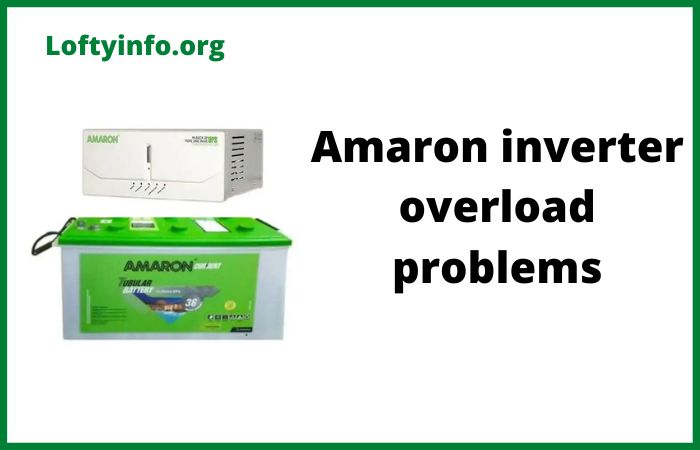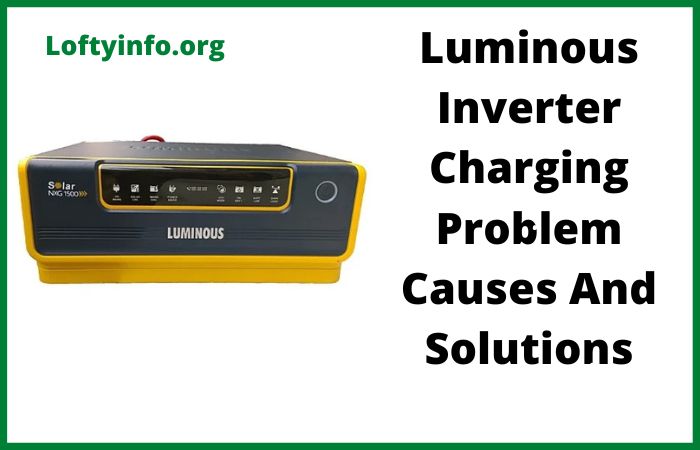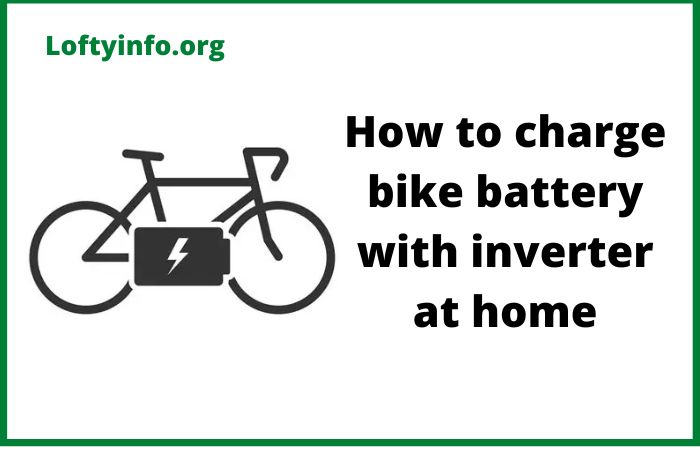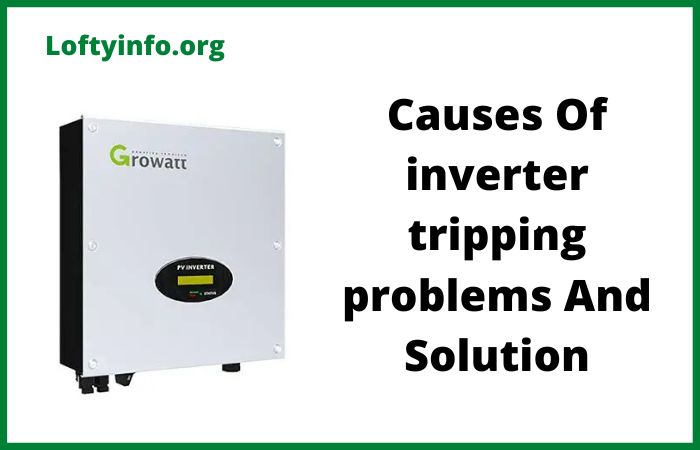Amaron Inverter Overload Problems: Causes and Solutions
Power inverters have become essential equipment for homes and businesses that need uninterrupted electricity supply during outages.
Amaron inverters are known for their reliability and efficiency but like any electronic device they can experience technical issues.
One of the most common problems users face is inverter overload which can disrupt power supply and potentially damage both the inverter and connected appliances.
Understanding these overload problems along with their causes and solutions helps you maintain your inverter properly and ensures continuous power backup when you need it most.
An overload situation occurs when the power demand from your connected devices exceeds what the inverter can safely provide.
This causes the inverter to draw excessive current which leads to overheating, automatic shutdown, or triggering of alarm systems.
Most Amaron inverters come equipped with built-in protection mechanisms that activate when they detect overload conditions.
These safety features are designed to protect the inverter from permanent damage but frequent overload situations can still reduce the lifespan of your equipment and create frustrating interruptions in your power supply.
Amaron Inverter Overload Problems
1) Excessive Load Connection Problem
The most straightforward overload problem happens when you connect too many appliances or devices to your Amaron inverter simultaneously.
Every inverter has a specific capacity rating measured in volt-amperes or watts which represents the maximum load it can handle safely.
When the combined power requirement of all connected devices exceeds this capacity the inverter enters an overload state.
This problem typically occurs when users underestimate the power consumption of their appliances or fail to calculate the total load before connecting multiple devices.
For example an 800va Amaron inverter can handle approximately 640 watts of load at 80 percent capacity. If you connect a refrigerator that draws 300 watts, a television consuming 150 watts, multiple led lights totaling 100 watts and a ceiling fan using 75 watts you are already at 625 watts. Adding just one more small appliance will push the system into overload.
The primary cause of this problem is inadequate load management and lack of awareness about individual appliance power ratings. Many users do not realize that certain devices like computers with multiple peripherals or kitchen appliances can draw significant power even when they appear small.
Additionally some appliances have starting or surge power requirements that temporarily exceed their normal operating consumption which can trigger overload conditions even when the steady-state load seems within limits.
To troubleshoot this issue you should first identify all devices currently connected to your inverter.
Check the power rating of each appliance which is usually mentioned on a label or in the user manual.
Calculate the total wattage by adding up all individual ratings and compare this with your inverter capacity. If the total exceeds 80 percent of your inverter rating you need to reduce the load immediately.
Start by disconnecting non-essential appliances and prioritize only critical devices during power outages.
You can also create a priority list of appliances to use during emergencies so you never exceed the safe operating limit.
If you consistently need more power than your current inverter provides consider upgrading to a higher capacity model that can accommodate your actual requirements.
2) Heavy Duty Appliance Connection Issue
Connecting appliances that require extremely high power to start or operate creates another common overload problem with Amaron inverters.
Devices like air conditioners, refrigerators, washing machines, water pumps and power tools fall into this category.
These appliances often have inductive loads which means they need significantly more power during startup than during normal operation.
The cause of this problem lies in the nature of inductive loads and their starting current requirements.
When an air conditioner compressor starts it can draw three to five times its normal operating power for a few seconds.
A refrigerator compressor, water pump motor or washing machine can create power surges during startup that overwhelm the inverter’s capacity even if the normal operating load is within acceptable limits.
Most standard Amaron inverters are not designed to handle such high surge currents from multiple heavy-duty appliances.
This situation becomes worse when multiple inductive appliances are connected together. If your refrigerator compressor kicks in while your washing machine is already running the combined surge can easily trigger an overload shutdown.
The inverter’s protection circuit detects this sudden spike in current draw and immediately cuts power to prevent damage to its internal components.
Troubleshooting this problem requires a different approach than simple load reduction. First identify all heavy-duty and inductive appliances in your home.
Check their starting current or surge power requirements from the manufacturer specifications. If possible avoid connecting multiple heavy appliances to the inverter simultaneously.
Stagger their usage so that only one high-power device operates at a time. When you must run a heavy appliance disconnect other non-essential loads temporarily to give the inverter enough capacity to handle the surge.
Consider using a separate dedicated circuit for your most critical heavy appliance or upgrade to an inverter with higher surge capacity if your power needs consistently include multiple heavy-duty devices.
Some advanced inverters are specifically designed to handle higher surge loads which makes them more suitable for homes with air conditioners and other heavy equipment.
3) Weak or Failing Battery Problem
A deteriorating or improperly maintained battery can cause your Amaron inverter to display overload symptoms even when the actual connected load is within normal limits.
The battery is the heart of your inverter system and when it fails to supply adequate power the inverter must work significantly harder to maintain the required output voltage and current.
The underlying cause of this problem is battery degradation which happens naturally over time through repeated charge and discharge cycles.
As batteries age their internal resistance increases and their capacity to deliver high current decreases. A weak battery cannot provide the surge current needed when appliances start up or when the load increases suddenly.
This forces the inverter to draw excessive current from the battery in an attempt to maintain proper output voltage which triggers the overload protection circuit.
Poor battery maintenance accelerates this deterioration. Inadequate water levels in tubular batteries, loose or corroded battery terminals, and irregular charging patterns all contribute to premature battery failure.
Additionally using a battery that is not matched to your inverter specifications can create similar problems from the start.
To troubleshoot battery-related overload problems begin by checking the battery voltage with a multimeter when it is fully charged and disconnected from any load.
A healthy 12v battery should read around 12.6 to 13 volts when fully charged. If the reading is significantly lower the battery may be failing. Next check the battery terminals for corrosion or loose connections.
Clean any corroded terminals with a wire brush and baking soda solution then tighten all connections securely. For tubular batteries check the water level and top up with distilled water if needed.
Load test the battery by connecting a moderate load and observing how quickly the voltage drops. A healthy battery should maintain stable voltage under load while a weak battery will show rapid voltage decline.
If the battery is several years old and shows signs of weakness replacement is usually the best solution.
When selecting a new battery ensure it matches your inverter specifications in terms of voltage, capacity and type.
Regular maintenance including periodic water level checks, terminal cleaning and ensuring proper charging can extend battery life and prevent overload problems.
4) False Overload Alarm Due to Internal Faults
One of the most frustrating problems users encounter is when the Amaron inverter indicates an overload condition or triggers alarms even with minimal or no load connected.
This false overload situation results from internal faults within the inverter circuitry rather than actual excess power demand.
Several internal issues can cause false overload indications.
Faulty sensors that monitor current flow may provide incorrect readings to the inverter’s control circuit making it believe an overload exists when none is present.
Damaged components on the printed circuit board particularly in the overload protection section can create short circuits or signal errors that trigger false alarms.
The microprocessor or integrated circuit that controls inverter functions may malfunction due to component failure, firmware glitches or manufacturing defects.
Calibration errors in the inverter settings can also cause the system to incorrectly interpret normal operating conditions as overload situations.
Additionally burned square wave generator circuits or damaged switching transistors can create current flow patterns that the protection circuit misinterprets as dangerous overload conditions.
Troubleshooting false overload alarms requires systematic diagnosis. Start by completely disconnecting all loads from the inverter output.
Turn off the inverter, unplug it from the power source and wait for at least one minute to allow capacitors to discharge.
Reconnect the power and turn on the inverter without any load attached. If the overload indication appears immediately without any connected devices you have confirmed an internal fault.
Next try resetting the inverter by turning it off, waiting another minute and restarting. Some temporary software glitches resolve with a simple reset.
Check all internal and external connections to ensure they are tight and corrosion-free as loose connections can sometimes create voltage fluctuations that mimic overload conditions.
If you have technical knowledge and experience with electronics you can carefully inspect the circuit board for visible signs of damage such as burned components, bulging capacitors or cracked solder joints.
However for most users the safest approach is to contact Amaron customer service or take the inverter to an authorized service center for professional diagnosis and repair.
Attempting complex circuit-level repairs without proper expertise can void your warranty and potentially cause more damage.
5) Cooling System Failure Leading to Overload
Inverters generate significant heat during operation especially when powering high loads and they rely on cooling fans and proper ventilation to maintain safe operating temperatures.
When the cooling system fails the inverter can overheat which triggers protection circuits that may manifest as overload alarms or automatic shutdowns.
The cooling fan inside your Amaron inverter runs continuously during operation to dissipate heat from power transistors, transformers and other components that generate thermal energy.
If this fan becomes stuck due to dust accumulation, bearing failure or electrical problems the inverter temperature rises rapidly. Similarly if ventilation slots become blocked by dust, debris or improper installation in enclosed spaces without airflow the heat cannot escape effectively.
Overheating causes the inverter’s thermal protection to activate which may shut down the system completely or trigger alarms that users sometimes confuse with overload warnings since both conditions can produce similar symptoms including beeping sounds and warning lights.
To troubleshoot cooling-related problems first ensure the inverter is installed in a well-ventilated location away from heat sources and with adequate clearance around all sides for airflow.
Check that all ventilation slots and openings are clear of dust and obstructions. Listen carefully to determine if the cooling fan is running when the inverter operates under load.
A stuck or failed fan will be silent or produce grinding noises instead of the normal smooth running sound. If the fan is not running check for loose electrical connections to the fan motor.
Carefully clean accumulated dust from the fan blades and surrounding area using compressed air or a soft brush.
Ensure the inverter is not placed in direct sunlight or near other heat-generating equipment. If the fan motor itself has failed it must be replaced to restore proper cooling.
Some users attempt to operate the inverter with a failed fan for short periods but this risks serious damage to internal components and should be avoided.
When you restart the inverter after addressing cooling issues allow it to cool completely first. Monitor the temperature during operation by feeling the external case which should be warm but not too hot to touch.
If overheating problems persist despite good ventilation and a functioning fan the inverter may have internal issues causing excessive heat generation which requires professional service.
6) Loose Connections and Wiring Problems
Poor electrical connections between the battery, inverter and load can create voltage drops and current fluctuations that manifest as overload conditions.
This problem is often overlooked because the connections may appear adequate at first glance but loose terminals or corroded contacts significantly impact performance.
When connections are loose the electrical resistance at those points increases substantially. This resistance causes voltage to drop across the connection especially when current flow increases under load.
The inverter detects these voltage fluctuations and may interpret them as overload situations since the symptoms are similar to excessive current draw.
Corroded battery terminals create the same effect by introducing high resistance in the power path. Even small amounts of corrosion can cause significant problems. Inadequate wire gauge for the current requirements creates similar issues.
If the wires connecting your battery to the inverter are too thin they cannot carry the required current without excessive voltage drop.
This is particularly problematic with high-capacity inverters that draw substantial current from the battery bank.
Troubleshooting connection problems requires careful inspection of the entire electrical path. Start at the battery terminals and check that both positive and negative connections are tight and free from corrosion.
Remove the terminal clamps, clean any white or greenish corrosion with a wire brush and baking soda solution, then reconnect and tighten securely. Inspect the battery cables for damage, fraying or inadequate size.
The cable gauge should be appropriate for your inverter capacity with larger inverters requiring thicker cables.
Check all connections at the inverter end as well ensuring input terminals are tight and clean.
Examine connection points at the distribution board or where loads connect to the inverter output.
Even a single loose connection in the circuit can cause problems. Use a multimeter to measure voltage at different points in the system both under no-load and under-load conditions.
Significant voltage differences between the battery terminals and the inverter input terminals indicate connection problems.
Tighten all terminals using appropriate tools and avoid over-tightening which can damage threads.
Apply a thin layer of petroleum jelly or specialized contact grease to battery terminals after cleaning to prevent future corrosion.
If voltage drop measurements reveal problems with wire gauge consider upgrading to heavier cables that can handle the current without significant resistance.
Proper installation and regular maintenance of connections prevents many false overload situations and improves overall system reliability.
Preventive Measures and Maintenance
Preventing overload problems requires a combination of proper system design, correct usage habits and regular maintenance.
Start by selecting an inverter with capacity that matches your actual power needs with some reserve for future expansion or occasional high loads.
Calculate your typical load requirements carefully and choose an inverter rated for at least 20 to 30 percent more than your normal usage.
Distribute your appliances intelligently and avoid connecting all high-power devices to the inverter. Use grid power for heavy continuous loads when available and reserve inverter power for essential circuits during outages.
Implement a regular maintenance schedule that includes monthly battery water level checks for tubular batteries, terminal cleaning every three months and annual professional servicing.
Keep the inverter installation area clean and well-ventilated ensuring dust does not accumulate in cooling vents.
Monitor the battery voltage regularly and replace batteries when they show signs of significant degradation before they cause inverter problems.
Educate all family members about the inverter capacity limits and which appliances should not be used simultaneously during power outages.
Consider using a smart power management system or monitoring app if your Amaron inverter supports this feature.
These tools help you track actual power consumption in real-time and alert you before overload conditions occur.
Document your inverter specifications, battery details and connected load information in an easily accessible location for quick reference during troubleshooting. Keep the warranty card and service center contact information readily available.
By understanding these common overload problems and implementing the appropriate solutions you can ensure your Amaron inverter provides reliable power backup for years.
Regular attention to maintenance, proper load management and prompt addressing of any warning signs will keep your system operating efficiently and prevent costly repairs or premature equipment replacement.
Causes of Exide inverter 850m VA overload problems
What can occurs when an inverter overloads
Exide inverter overload trip problems causes
What to do when Inverter shows low battery always
Why microtek inverter overload problems occur
How inverter overload affects performance
Fixing common luminous zelio 1100 inverter overload problems
Causes of sungrow inverter problems
Common growatt sp2000 problems
Common growatt spf 5000 es problems and solutions
What causes growatt pv isolation low fault
The benefits of solar panels on homes
Common magnum inverter problems
Common Microtek inverter overcharging problems






